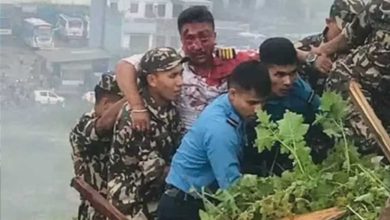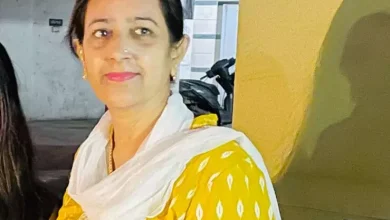CM Sai held a review meeting of Women and Child Development Department

Raipur. CM Vishnudev Sai took a review meeting of the Women and Child Development Department.
The policy decisions of the state government gave new strength to farming.
The state government is making every possible effort to strengthen the economic condition of the farmers. Villages, poor and farmers are the first priority of the government. Agriculture has a big contribution in the country’s GDP, agriculture is also the basic foundation of Chhattisgarh’s economy and Chhattisgarh is called the rice bowl. The policy decisions taken by the state government in the interest of farmers during this period of one and a half years under the leadership of Chief Minister Shri Sai have given new strength to farming. In the last Kharif marketing year, a record has been set by purchasing 144.92 lakh metric tonnes of paddy from farmers at the support price. Hareli festival has special significance in Chhattisgarh. Hareli is the first festival of Chhattisgarh. Farming in the state starts with this festival. This festival is traditionally celebrated with enthusiasm in rural areas. On this day, farmers worship the agricultural equipment used in farming and soil worship is done in homes. Children and youth in the village enjoy Gidi. This festival has also increased the importance of Chhattisgarh’s culture and folk festivals. Hareli Tihar is incomplete without Gidi in rural areas. Under the leadership of Chief Minister Vishnu Dev Sai, the state government has not only increased the respect of farmers by purchasing paddy from registered farmers at the support price of 21 quintals per acre at the rate of Rs 3100 per quintal, but has also done remarkable work in taking the farmers towards progress. Along with this, the economic condition of the farmers has been strengthened by transferring the outstanding paddy bonus of the last two years of Raman government of Rs 3716.38 crore to the farmers’ accounts. The Chief Minister believes that India lives in villages. When farmers are prosperous, the trade and industry of the state will grow.
According to tradition, for years, in the villages of Chhattisgarh, before Hareli Tihar, there used to be an order for Gidi in the carpenter’s house and on the insistence of children, the parents used to make Gidi somehow. On the day of Hareli Tihar, from the morning, the farmer family, the elderly children, all bathe their cows, bulls, calves in the pond’s Panghat and clean the farming tools, plough (nagar), hoe, spade, pickaxe and decorate them for worship by spreading mud in the courtyard of the house. Mothers make jaggery cheela. After worshipping the agricultural tools with incense and lamps, coconut and jaggery cheela are offered as prasad. The deities they worship in their respective homes are worshipped together. Thakurdev of the village is worshipped.
On the day of Hareli festival, medicated flour balls are fed to protect the health of livestock. In the village, the people of the Yadav community go to the forest and bring roots and tubers and provide forest medicine to the farmers for the animals on Hareli day. The people of the Yadav community boil the herbs brought from the forest and give it to the farmers near Sahadadev or Thakurdev of the village. In return, farmers have a tradition of gifting rice, pulses etc. to Yadavs.
Hareli festival is celebrated on Amavasya of Krishna Paksha of Sawan month. Hareli means greenery. In rainy season, earth covers itself with green sheet. Environment appears green all around. By the time Hareli festival arrives, farming of Kharif crops etc. is almost done. Mothers make jaggery cheela. After washing agricultural tools and worshipping with incense sticks and lamps, coconut and jaggery cheela are offered as prasad. Thakur Dev of the village is worshipped and coconut is offered to him.
The tradition of climbing Gidi is inseparably associated with Hareli festival. Gidi is made by almost all families in rural areas. Children and youth of the family enjoy Gidi a lot. Gidi is made from bamboo. Nails are put in two bamboos at equal distance. Pieces of another bamboo are torn from the middle and divided into two parts. Two Paua are made by tying a coconut with a rope. This Paua is actually a foot donation which is tied on the nail inserted in two bamboos cut lengthwise. While walking on the Gidi, a sound of ‘Rach-Rach’ is produced, which makes the atmosphere more pleasant. Therefore, on this day, farmers worship their livestock after bathing them. They knead wheat flour, make it round and wrap it in the leaves of castor or khamaar tree and feed medicine to the cattle. So that the cattle can be protected from diseases. In the village, Pauni-Pasari like Raut and Baiga stick a neem branch on the door of every house. In the village, blacksmiths put a nail in the door frame to ward off the fear of evil. This tradition still exists in rural areas.
In the previous decade, the village used to get muddy during the rainy season, at that time roaming the street with Gidi had its own unique pleasure. The problem of mud has been resolved to a great extent due to the concretization of streets in every village. On the day of Hareli, housewives prepare many types of Chhattisgarhi dishes in their kitchen. Farmers worship the tools used in farming like plough, shovel, datari, tangiya, basula, hoe, crowbar, gaiti etc. and offer Chhattisgarhi dishes like gulgul bhajiya and guddha cheela. Apart from this, geedi is also worshipped. In the evening, the youth and children play many games like throwing coconut in the village street and kabaddi in the village ground. Daughters-in-law and daughters wear new clothes and enjoy playing the games like Sawan swing, billas, kho-kho, phugdi etc.





